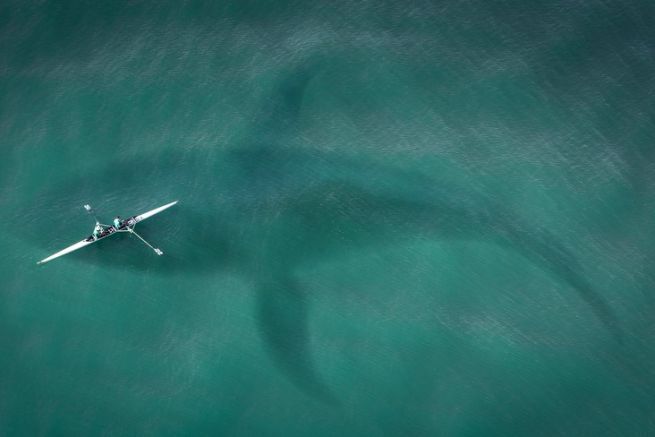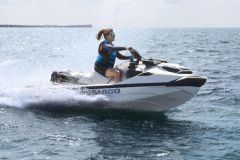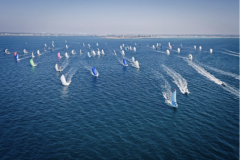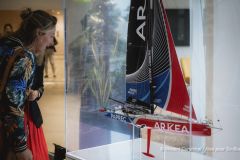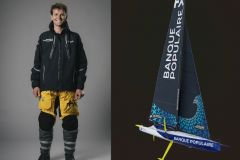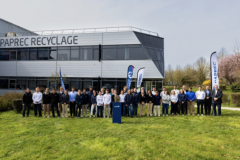The problem of boat noise is a reality that must be taken into account, particularly with a view to reducing the number of impacts between competitors' vessels and cetaceans. Too noisy, they will attract the curiosity of certain species such as sperm whales, humpback whales, fin whales and possibly blue whales that will come to the news, see what it is all about and, as they get closer, risk an accident. Too silent, the bows do not warn the animals that will not turn away. These are the explanations given by Olivier Adam, bioacoustician, Professor at the Sorbonne University, specialist in cetacean noise emissions.
Noise, attracting or repelling cetaceans
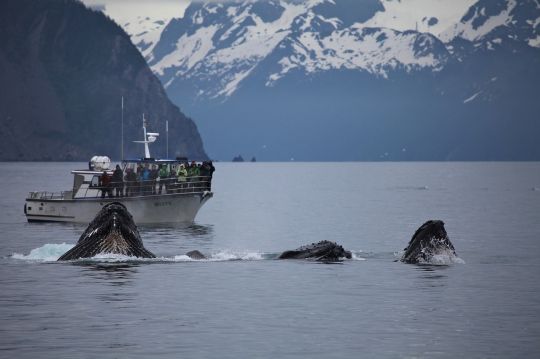
This specialist worked with Fabrice Amedeo, skipper of the Newrest - Art & Fenêtres boat in the 2020 Vendée Globe, to look for solutions to counter or detect the risks of collision with these animals that inhabit our oceans. He explains that every boat has an acoustic signature (this is the signature that submariners look for when identifying vessels), which is its natural noise (hull rubbing against the water, noise from the mast, falling back onto the water of the boat ...). To keep cetaceans away, it can make sense to add noise. In other cases, if the acoustic signature of the boat is weak, it is better not to add noise.
It was to validate or not this basic postulate that Fabrice and Olivier made a series of recordings of the monohull Newrest - Art & Fenêtres using a hydrophone. The surprise came from the little noise generated by the IMOCA. The boat's skipper explains: " However, the result of this recording should be put into perspective: the boat was moving forward at an average speed on flat seas. "Olivier Adam adds..." It's rather good news because it's a performance indicator, first of all, and because Fabrice's boat shouldn't attract cetaceans as it's very quiet and considered stealthy in these flat sea conditions and medium wind ". But he wonders: " There is still some doubt about the acoustic generation, especially about the differences that might exist between categories of vessels and depending on sea and weather conditions. It would be interesting to make acoustic recordings to try to highlight specific sounds (whistling, hull hits in waves, transmission of mast sound through the hull) that could attract cetaceans. "
Anti-collision systems
It was to avoid these collisions as much as possible that Fabrice equipped his boat with two anti-collision systems, one active and the other passive.
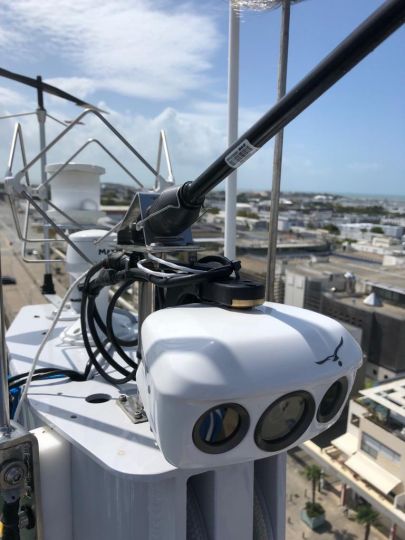
The Liabilities, we present it to you in this issue Oscar, the collision detector developed by BSB Marine, has the capacity to detect the body of a cetacean at a distance of about 600 meters provided that it is at the water's edge (a cetacean sleeping on the surface of the water for example). About Oscar, Fabrice explains: "I'm not sure how I'm going to be able to detect a cetacean's body If Oscar detects an animal or object on the surface of the water, on the boat's course, an alarm will sound instantly. This is a relatively new tool that relies heavily on data acquisition. All in all, the more boats there are equipped, the more powerful it will be. "18 of the 33 boats lining up on the start line of the 2020 Vendée Globe are equipped with this system.
The asset, Whale Shield, aims to ward off cetaceans in the vicinity. It was on the initiative of Alex Thomson that a second solution was proposed to the skippers. It is a "pinger" installed at the front of the keel bulb at a depth of 4.50 metres, which emits an ultrasound that is supposed to ward off cetaceans. Proposed by the Australian company Future Oceans, initially invented to prevent dolphins from becoming trapped in fishing nets, Whale Shield will equip 5 boats at the start of the IMOCA 2020 race. Questions are nevertheless being asked about this system, about which there is little feedback. The relevance of whether or not to put it into operation is being questioned. Emitting ultrasound can repel species, but also create a noise attracting curiosity for certain other species of marine animals.

Each species will behave differently in response to noise
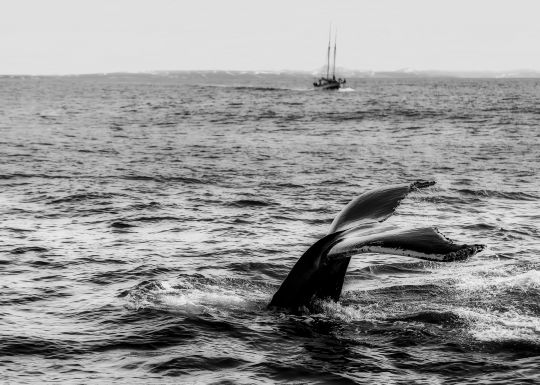
Olivier Adam explains that there are 89 species of cetaceans, all of which have different reactions: " Some will flee the boats heard while others will come to observe them. This is a real subject that scientists have been working on for the last twenty years. In ocean racing, it is a question of understanding how collisions with potentially silent and stealthy boats occur. Fabrice has this constructive approach. He understands the sea, the problems on the environment, so I think it's really very interesting. "
Collisions are a recognized reality
Collisions between ships and animals are a reality for all skippers preparing to sail the world's seas. In the jargon, they are called UFOs, responsible for many retirements in the history of ocean racing. They may be buoys, logs, wrecks or containers... But in the majority of cases, they are cetaceans, alive, as the skipper explains to us" There's a real omerta on the subject. Shocks with cetaceans are unfortunately frequent and each time, sailors invoke a shock with a UFO for image reasons. We don't want to pass for whale killers. On the contrary, I think we should talk about it, because if 30 IMOCA boats launched around the world do not escape collisions with cetaceans, what about the world merchant fleet? ".
It is to counter this threat to the inhabitants of the ocean floor as well as to the sailors that more and more IMOCA class skippers are equipping themselves. Catherine Chabaud, the first woman to complete the Vendée Globe and now a Member of the European Parliament, is to be congratulated for this initiative, as she explains: "The IMOCA class is a very important part of the French economy The subject of fishing nets and the protection of dolphins is a concern of the European Commission and in particular of the European Commissioner for the Environment, Virginijus Sinkevi?ius, who has launched a working group in which I am participating. For cetaceans, the subject is also very important and ocean racing has a role to play in terms of setting an example, but also in the search for innovative solutions that could then be deployed on commercial vessels. I had launched a working group on the subject with skippers at the Ministry of Ecology after the last Vendée Globe, and it's a real satisfaction to see that the sailors are taking the subject on board today and going further. "
Obviously human risk
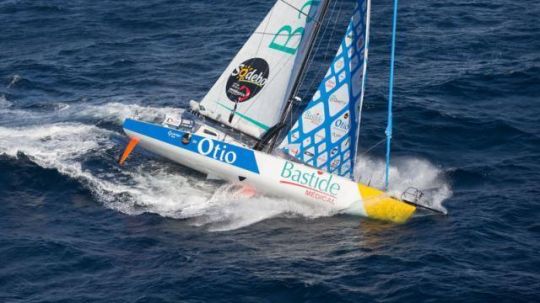
Beyond the necessary preservation of species, it is above all the safety of the sailors in these ocean races that is threatened. Just a few of the recent dramas are worth mentioning: The Volvo Race during which the vessel ABN Amro One hit a whale and destroyed the daggerboard, Jean-Edouard Criquioche who was scared to death when he hit a cetacean during the 2010 Route du Rhum or Kito de Pavant forced to abandon his vessel in December 2016 after a collision that was known to have taken place some time later between a cetacean and his monohull, Bastide Otio. These devices to detect and avoid these collisions are therefore a good thing for everyone, including cetaceans.
Structural changes in the vessels involved, particularly the presence of foils, are creating boats that are increasingly fast and whose footprint on the water is ever wider. Including foils, some ships will be more than 12 metres wide. These are all potential collisions with a UFO or an animal. A collision which, with today's speeds (we are talking about nearly 40 knots here) can cause both damage to the ship and serious injuries to the skipper.
